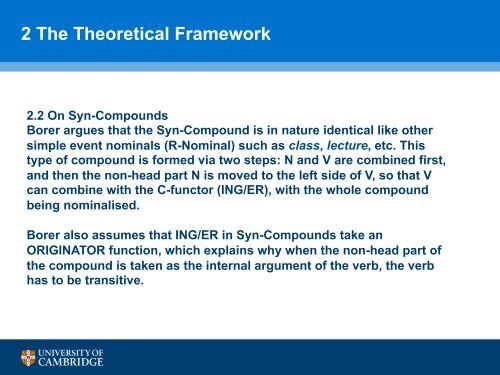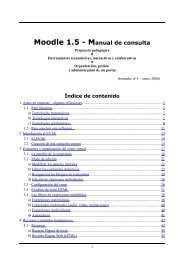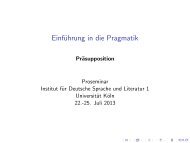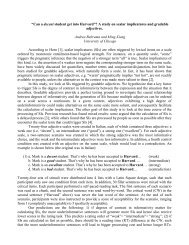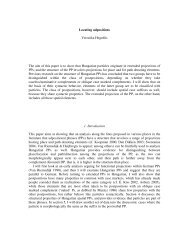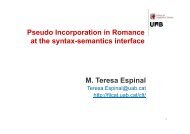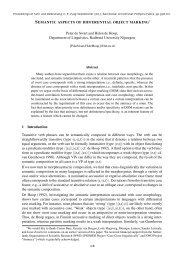slides - corpora@parles.upf - Universitat Pompeu Fabra
slides - corpora@parles.upf - Universitat Pompeu Fabra
slides - corpora@parles.upf - Universitat Pompeu Fabra
You also want an ePaper? Increase the reach of your titles
YUMPU automatically turns print PDFs into web optimized ePapers that Google loves.
2 The Theoretical Framework <br />
2.2 On Syn-Compounds<br />
Borer argues that the Syn-Compound is in nature identical like other<br />
simple event nominals (R-Nominal) such as class, lecture, etc. This<br />
type of compound is formed via two steps: N and V are combined first,<br />
and then the non-head part N is moved to the left side of V, so that V<br />
can combine with the C-functor (ING/ER), with the whole compound<br />
being nominalised.<br />
Borer also assumes that ING/ER in Syn-Compounds take an<br />
ORIGINATOR function, which explains why when the non-head part of<br />
the compound is taken as the internal argument of the verb, the verb<br />
has to be transitive.


